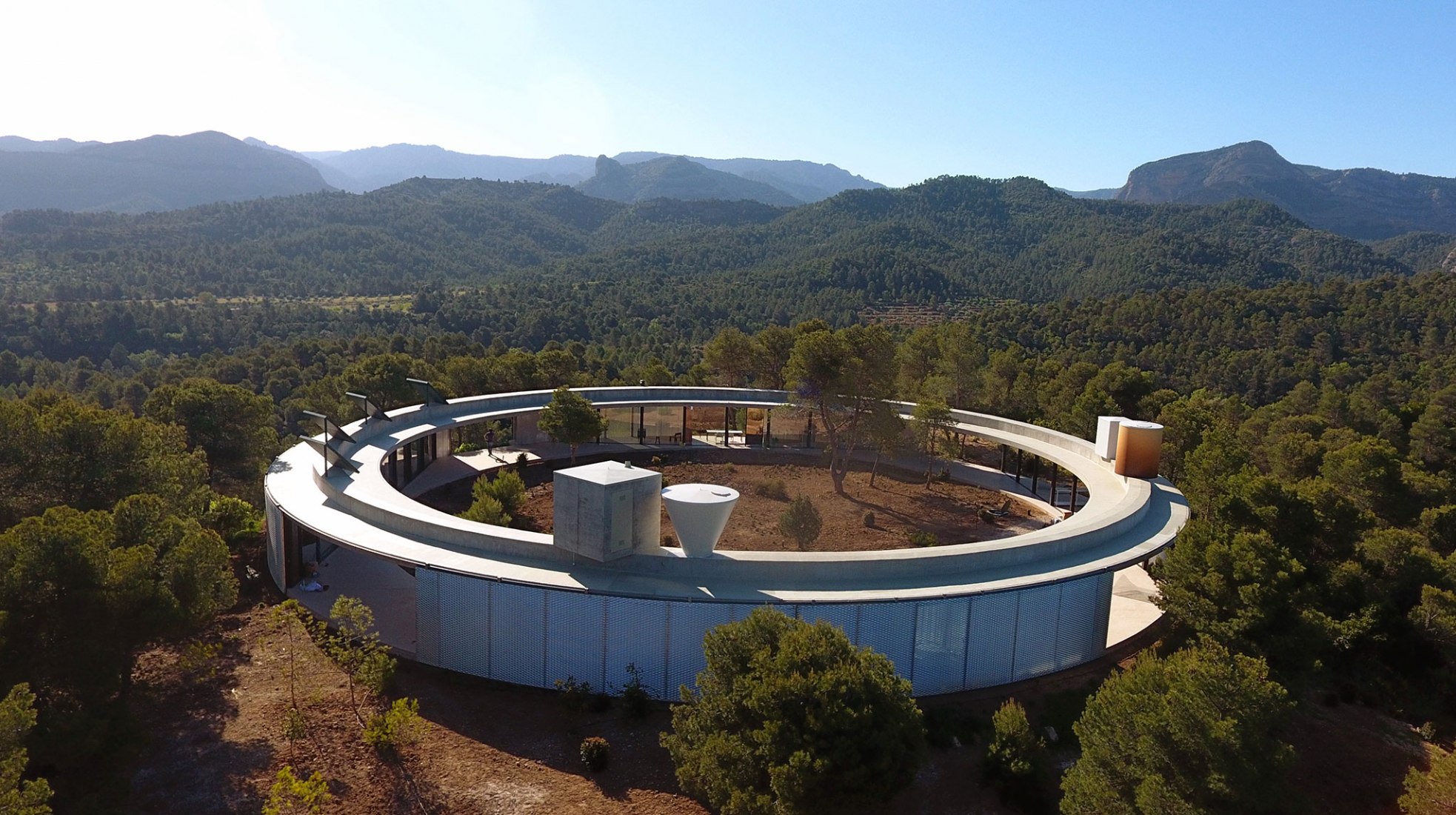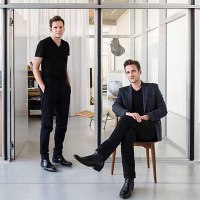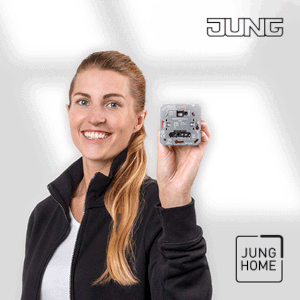Solo Office by Office Kersten Geers David Van Severen. The circular house that disappears in the forest
28/06/2017.
[Teruel] Spain
metalocus, SARA NÁJAR
metalocus, SARA NÁJAR






Description of the project by Office Kersten Geers David Van Severen
Christian Bourdais Solo Houses venture becomes most evident by making the journey to Cretas, an untouched forest area in the mountainous region of Matarraña just north-east of the natural park Els Ports, located in the center of the triangle Barcelona–Valencia–Saragossa. Here, amid a hundred hectares of plots of pure nature, one feels all of a sudden truly “solo” – alone and magically isolated and disconnected from everyday turbulences. These architectural experiences will harmoniously be integrated into a new-generation hotel proposal.
Matarraña, located in the superb inland region of Aragon, is a Spanish land that has kept its authenticity, history, and traditions. Described by CNN as Spanish Tuscany, the region is opening itself to the world and is accessible via four international airports (Barcelona, Reus, Castellon, and Valencia). Matarraña, with its Mediterranean landscape, its sunshine, its 18 medieval villages perched on the hills, its crystalline rivers, its waterfalls, its olive and almond tree fields, its black truffles, its ochre soil, its renowned wines, its gastronomy, offers an idyllic frame to commune with nature. We can find a wide range of outdoor activities, adventure sports, and charming hotels in surroundings that are still confidential.
The first house of the Solo Houses project was completed three years ago by the Chilean duo Mauricio Pezo and Sofia Von Ellrichshausen, and the second «second home» by The Belgium architects Office Kersten Geers David Van Severen was inaugurated on April 24th. Approaching the newest house of Office KGDVS that is built on a natural plateau, providing its future residents a breath-taking 360º panorama of wilderness, one immediately wonders whether this can be put into the definition of a house at all or whether it needs a new term altogether.
The Office KGDVS project seemingly provides all the basic structural elements: a concrete foundation, (but shaped as a circular “catwalk”), a façade corresponding with the three inhabited segments (but perforated and with the feature to be shifted around the circumference if needed), a simple flat roof supported by four rows made up of nine columns which cut chords from the circular base (but with all technical infrastructure - photovoltaic panels, water tanks and generators - exposed as though sculptural objects), and a set of furniture (but all directly connected to the supporting columns). In this project, all conventions are questioned and then given a solid new answer.
The overall 1.600 m² surface includes a 1050 m² patio garden with a naturally carved pool and three segments –living room, master bedroom, and guest room, each 60m². It is at once discrete and imposing, ceremonial and sparse, open and introverted, transparent and opaque, luxurious and austere.
The simple circular roof with a diameter of 40 meters underlines the qualities of both the plateau and its edge. Large stretches of curtain facade slide on the outer edge of the circle, allowing the living areas to fully open, and providing a maximum relationship between the dweller and the surrounding nature.
As the architects once explained, the Solo House II is an exercise in making architecture out of pure devices. Some of these devices have been specially conceived by chosen others: the textures for the roof objects by painter Pieter Vermeersch, the mobile stool-lamp hybrids by artist Richard Venlet, or the iconic mesh Chaise Longue by designers Muller Van Severen (WireS), all inspired by the curvatures of the house.
- Constructive system: steel frame and reinforced concrete.
- Exterior finishings: extruded aluminum and polycarbonate panels, glass, polished stainless doors, exposed concrete ceilings, and colored concrete floors.
- Interior finishings: polycarbonate panels, glass, polished stainless doors, dyed wood ceilings, colored concrete floors.
Office Kersten Geers David Van Severen was founded in 2002 by Kersten Geers and David Van Severen. Since its establishment, Office Kersten Geers David Van Severen has earned a reputation as one of Belgium’s most successful and renowned practices, and one of the world’s truly original voices in present-day architecture. Office engages in all architectural and urbanist design, creating projects of all scales ranging from furniture to master planning in Belgium as well as internationally. This practice is combined with academic research and teaching. These two aspects of Office’s work are explicitly each other’s mirror, creating unexpected parallels between academic and practical work.
Kersten Geers (Ghent, 1975), graduated in Architecture and Urbanism at the University of Ghent, Belgium, and the Esquela Tecnica Superior de Arquitectura in Madrid, Spain. He worked with Maxwan Architects and Urbanists and with Neutelings Riedijk Architects in Rotterdam. He was a professor at the University of Ghent, and visiting professor at Columbia University, NYC, and the Academy of Architecture in Mendrisio (CH), and is currently teaching at the EPFL, Lausanne (CH), and Harvard Graduate School of Design (US). He is a founding member of the architecture magazine San Rocco.
David Van Severen (Ghent, 1978), graduated in Architecture and Urbanism at the University of Ghent, Belgium, and the Esquela Tecnica Superior de Arquitectura in Madrid, Spain. Since 1995 he designed and made several objects, installations, and furniture. He worked with Stéphane Beel Architects, Xaveer De Geyter Architects, and Atelier Maarten Van Severen. He was a teacher and guest critic at the Academy of Amsterdam, the TU Delft, the Berlage Institute in Rotterdam (NL), and the Architecture School of Versailles (FR), and he’s currently guest tutor at Harvard Graduate School of Design (US).





